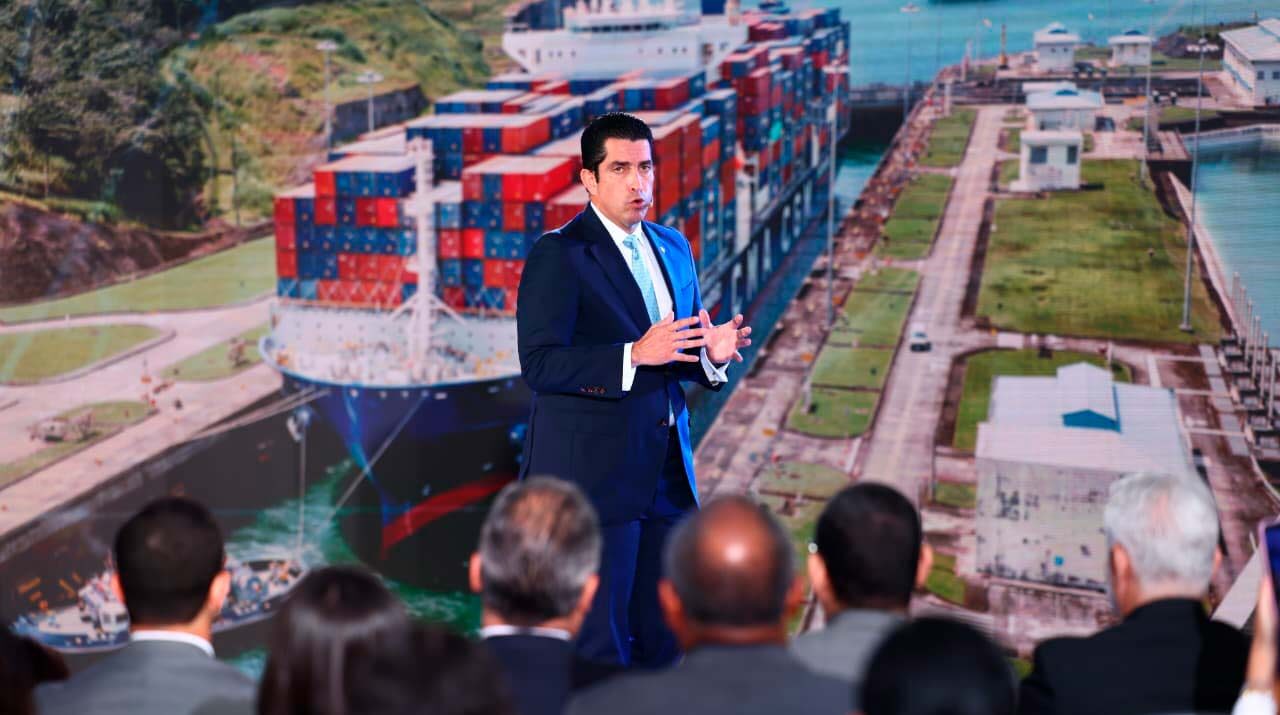PANAMA CITY, Panama, November 25, 2003 – The Panama Canal Authority (ACP) announced today two key investments – both part of the Canal’s permanent modernization program. The ACP has purchased an advanced new meteorological radar system and will build a new launch vessel, making the Canal safer, faster and more efficient. The launch will be constructed in Panama by the ACP.
The ACP’s new meteorological radar system, model DWSR-8501S-9, was manufactured by Enterprise Electronics Corporation and is valued at more than a million dollars. The new radar will provide the Canal’s Meteorological and Hydrological Section with cost-efficient and state-of-the-art information to make atmospheric predictions. This will help to control Canal water levels, to monitor rain in the Canal Watershed and to plan water spills at the Canal’s dams. Despite updates to the existing unit, which operated since 1983, maintenance costs encouraged the ACP to purchase the new radar system, which has been installed at Engineer’s Hill in Panama City.
“This new system provides better and safer service to our worldwide customers and ensures the well-being of Panamanians living near the Canal’s lakes. We continue to predict weather conditions and resulting water levels,” said Agustin Arias, Engineering and Projects Director. “Everything we do revolves around customer service, efficiency and safety.”
Never done before, the ACP’s Industrial Shipyard Division is constructing an aluminum launch vessel, a boat used to transport Canal linehandlers to ships navigating the Canal. The launch is 50 feet long, 15 feet wide, and powered by two Deutz 653 horsepower motors, generating a maximum speed of 22 knots. The launch will be used to deliver as many as 30 linehandlers to ships using the Canal, assisting as the cargo and passenger vessels are towed or use their own power to journey through the Canal’s locks, lakes and Cut.
The launch complies with all international requirements for shipbuilding and its construction is being inspected by the Bureau Veritas of Panama.
“We take every opportunity to educate and transfer skills to our employees – we want them to be the most skillful and efficient in the world,” said Manuel Benitez, Industrial Services Director. “Building this vessel in Panama will give ACP employees unique opportunities to grow and learn. We are doing the same thing with several locomotives recently purchased from Mitsubishi, again reinforcing our commitment to developing the best possible skill set for our employees.”
Recent improvements in Canal efficiency are the result of the ACP’s permanent modernization program, with projects such as: the widening of the Gaillard Cut, the acquisition of new locomotives and the rehabilitation of the locomotive tracks, the implementation of a sophisticated navigation system – AIS, the addition of new tugboats and the deepening of Gatun Lake. These projects increase efficiency and reduce Canal Waters Time, which lead to increased capacity.
About the Panama Canal Authority
The Panama Canal Authority is the autonomous agency of the Government of Panama in charge of managing, operating, and maintaining the Panama Canal. The operation of the Panama Canal Authority is based on its organic law and the regulations approved by its Board of Directors. For more information, please refer to the Panama Canal Authority’s Web site: www.pancanal.com.
The Authority’s responsibility to the Panamanian people is paramount. The Canal belongs to the people and benefits from the Canal should accrue to as many Panamanians as possible. The Authority will plan its future so that it will continually contribute to the economic development and welfare of the citizens of Panama.
For nearly 90 years, the Panama Canal has served as the global gateway – a pathway for the shipment of major world commodities. Since the end of 1999, the ACP assumed the responsibility for the management, operation and modernization of the Canal as well as the protection and conservation of its watershed.
In the past four years, the ACP has made significant strides – shifting to a market-oriented business model focused on customer service and reliability, making major capital investments for new and modern equipment and machinery, increasing safety and operational efficiency for customers, decreasing the time it takes ships to travel through the Canal and widening and deepening sections of the waterway.
An important transportation link, the Canal services more than 140 different transportation routes from every corner – it is where major trading routes of the world connect and intersect providing safe, reliable and secure passage for all vessels.



